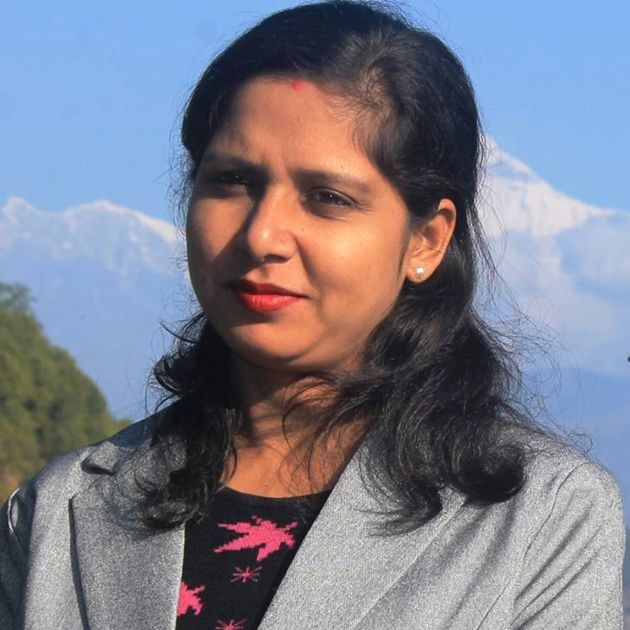Lumbini Province
Kapilvastu still has a long way to go to reduce home births
Although women have started looking at institutional delivery as an option, the majority of women from rural areas still give birth at home.
Amrita Anmol
Twenty-five-year-old Sajrun Nisha, from Belaspur in ward 6 of Kapilvastu Municipality, gave birth to her first child at home. During her second pregnancy, she was in labour for three days. On the fourth day, a local health volunteer took her to the Taulihawa Hospital where she delivered her baby by a caesarean section.
Kalimun Nisha, a 30-year-old woman from Semri in ward 6 of the municipality, gave birth to her three children at home. All her deliveries were traumatising, she says. “I was in labour for four to five days during both pregnancies. I was usually unconscious and always feared losing my child. It took me so long to recover from the deliveries,” she said.
The nearest health post is only a kilometre from Kalimun’s house but since she belongs to a very traditional Muslim family where females visiting health facilities for pregnancy check-ups are frowned upon, she did not visit the health post even once during all three pregnancies.
However, after the municipality started campaigns on the importance of prenatal checkups, Kalimun’s family took her to the health post for her medical checkup during her fourth pregnancy.
On August 8, 2023, Kalimun delivered her fourth child at the local health post and returned home the next day.
“Unlike my other deliveries, the last one was easy,” she said. “I wasn’t afraid for my life or that of my child. I recovered from the delivery the very next day.”
Savita Gautam, a female community health volunteer in Kapilvastu Municipality, visited Kalimun on the fifth day after the delivery for routine check-ups and to provide medications. She reported that both the mother and the child were in good health.
“After a long talk with my husband and family and suggestions provided by the health workers, I persuaded my husband to adopt family planning methods. In our culture, the use of contraceptives is forbidden but after listening to the health volunteers, my family members agreed,” said Kalimun.
Kapilvastu is witnessing a gradual shift in perspectives among pregnant women and their families on the importance of institutional birth and the need for medical care during pregnancy for the health of the mother and the child.
However, while there are success stories like that of Kalimun and Sajrun, there are still a lot of pregnant women risking their lives giving birth at home. According to Sunita Gupta, deputy mayor of Kapilvastu Municipality, although women have started looking at institutional births as an option, the majority of women from rural areas are still giving birth at home.
Manisha Pasi, a 20-year-old woman from Badera in ward 1 of Krishnanagar Municipality in Kapilvastu, was brought to Lumbini Province Hospital on August 1, 2023. She was four months pregnant at the time. The doctors advised her to get admitted to the intensive care unit (ICU) due to complications in her pregnancy.
Pasi’s family did not have the means to cover her medical expenses at the hospital so they took her to a local medical clinic in India. Pasi’s condition did not improve even after receiving treatment at the medical centre.
She died at home on August 5.
In the fourth week of November, Indu Chaudhary, a 30-year-old pregnant woman also from Badera, died due to complications in her pregnancy. According to her family members, the pregnant woman was past her delivery date and was not keeping well. But the family decided to wait until the Tihar festivities were over before taking her to the hospital. On November 12, 2023, the mother of three children, pregnant with her fourth child fainted and never regained consciousness.
According to Kamala Upadhya, auxiliary nurse and midwife of the local Shivanagar Health Post in the municipality, both the pregnant women belonging to working-class families died due to a lack of timely treatment and negligence of the family members.
“The family members wait until the last moment to take pregnant women to the hospital,” she said. “Although there has been some improvement in maternal mortality rate in the province compared to previous years, we have a long way to go before every pregnant woman gets a chance to opt for institutional birth.”
Among the 12 districts of the province, Kapilvastu tops the list of the most number of home births and out of 10 local units of the district, Kapilvastu Municipality has the highest number of home births.
According to the Health Unit of Kapilvastu Municipality, although the number of women giving birth at home is gradually declining, it is still a challenge to bring the number down to zero. The number of women who gave birth at home in the fiscal year 2021-22 came down to 333 from 516 in the fiscal year 2020-21. The number had dropped down to 214 in the fiscal year 2022-23, and 118 up until mid-November of the current fiscal year 2023-24.
Since Kapilvastu has still not been able to bring down home births to the desired number and bring pregnant women to health institutions for institutional births, the local units have taken initiatives to make home births less risky. Kapilvastu Municipality, with the highest number of home births, deploys health volunteers to assist pregnant women during delivery at home. “Health volunteers also advise the new mother and her family on how to take care of the new mother and her baby in the post-natal phase,” said Deputy Mayor Gupta. “The volunteers also encourage the family members to be open to the idea of visiting health institutions in case of next pregnancy.”
To encourage institutional births, the local-level government has deployed health volunteers and engaged mothers’ groups to encourage women to go to health institutions for delivery.
Krishnanagar Municipality in coordination with various social organisations has decided to launch awareness programmes targeting the male members of the family to disseminate the message regarding the importance of medical assistance to pregnant women throughout their pregnancy.
Rajat Pratap Shah, mayor of Krishnanagar Municipality, said that rural women mostly opted for home births because of their poor financial conditions. The other reason, he points out, is the conservative attitude of their family members. “While many women would want to go for institutional birth, the men in their families discourage them,” said Shah. “We are taking help from the local community leaders and religious leaders to help us raise awareness about the advantages of institutional births and how it can help in controlling maternal mortality rate.”
At the provincial level too the health authorities are doubling down on their efforts to control home births and encourage women and their families to opt for institutional birth. “We are spreading awareness in all the local units of the province with the help of governmental and non-governmental organisations, due to which the situation of home birth and regular health check-ups is slightly improving,” said Kaushal Bhandari, head of the Family Welfare Division of the Health Directorate, Lumbini Province. According to him, the provincial government launched the campaign of zero home deliveries in all the local units of the province in the last fiscal year. So far, only four out of 109 local units in the province have reported zero home deliveries.
Lumbini province has a total of 406 birthing centres, 22 hospitals including private ones that provide free maternity services, and three other hospitals that provide specialised maternity services for complicated cases, according to the provincial health directorate.
The health directorate also deploys 84 nurses for door-to-door health check-ups with ultrasound services.
As per the national census 2021, Nepal’s maternal mortality rate is 151 per 100,000. However, the maternal mortality rate in Lumbini is 207 per 100,000, which is the highest among all seven provinces in the country. Similarly, the maternal mortality rate of Karnali is 172 and Madhesh is 140.
Savita Gautam, a female community health volunteer from Kapilvastu Municipality, said that along with awareness programmes, health institutions becoming maternity-friendly can help encourage pregnant women to seek care at these facilities.
“Making health institutions service-seeker friendly, mobilising health institution management groups, health volunteers, and mothers’ groups and deploying them door-to-door can help create awareness against maternal mortality. This approach aims to reach and encourage pregnant women to visit health facilities,” said Gautam.
Dr Binod Kumar Giri, director of the Health Directorate, Lumbini Province, efforts are on to further develop the facilities, reach the underprivileged communities, and spread awareness are going on so no woman is deprived of safe maternity services.




 8.12°C Kathmandu
8.12°C Kathmandu











